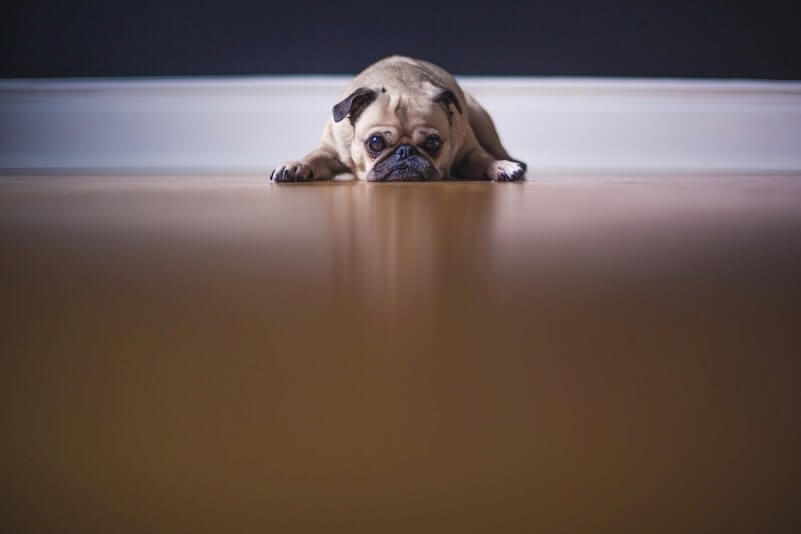Obesity is on the rise in the United States, and public health officials and doctors are trying their best to educate and help people stay in shape so they can live longer, healthier, happier lives. However, humans aren’t the only ones that can be overweight or obese.
About 56 percent of all dogs in the country are overweight or obese. While you may think that a chunky dog looks cute or happy, the long-term consequences of their excess weight are anything but sweet. Those extra treats could shorten your dog’s life and worsen their overall well-being.
Learn more about obesity in dogs: keep reading to learn why it’s a problem, how to know if your dog is overweight, and how to help your pet thrive.
So What If My Dog Is Overweight?
Throughout history, many dogs have worked for their livelihood, such as border collies rounding up sheep or terriers eradicating rodents. However, most of the dogs in the United States today are simply pets, and their sole job is providing companionship. Since these dogs don’t need to work for a living and are free to lounge on the couch, you may not think that it’s a big deal for them to carry extra weight.
However, an obese or overweight dog will still have a diminished quality of life. Excess body weight can:
- Decrease their physical stamina, which will make playing and going for walks harder
- Make breathing more difficult
- Cause serious health problems like hypertension, diabetes, osteoarthritis, and cancer
- Lower their immune system function, which leads to them being sick more often
- Lower their heat tolerance, which makes them more susceptible to heat exhaustion or heat stroke
These problems can shorten a dog’s life and make them unhappy or uncomfortable. If you want to give your dog the best life possible, you must take obesity seriously.
How Can I Tell If My Dog Is Overweight or Obese?
Your dog’s veterinarian will be able to tell you if your dog needs to lose weight. However, you can still watch for signs that your dog is overweight on your own.
Generally, if your dog is at their ideal weight, you should be able to feel your dog’s ribs easily when you touch their sides. You should also be able to see their waist easily when you look at them from above or from the side. However, if your dog’s ribs, spine, or pelvic bones are prominent, they may actually be underweight.
If you have a hard time feeling your dog’s ribs or seeing their waist, they probably have too much body fat. Set an appointment with your vet to make sure.
What Causes Obesity in Dogs?
Generally, obesity in both dogs and humans comes from eating too much and not getting enough exercise. However, that’s not the entire story.
Some breeds are especially prone to obesity, like Labrador retrievers, basset hounds, and dachshunds. Your vet will know if your dog’s breed tends to carry extra weight. If your dog is genetically likely to become overweight, you’ll have to be extra careful to help them stay trim.
Sometimes excess weight is due to a medical condition, like thyroid or hormonal imbalances. Before you try to help your dog lose weight, you need to take them to a vet so you can rule out these kinds of issues.
However, the biggest cause of obesity in dogs is usually their owners. Generally, dog owners love their pets fiercely and delight in giving them the foods the dogs love. If you constantly use pet treats or human food to show your dog that you love them, they’ll probably end up eating more than they should.
How Can You Help Your Dog Lose Weight?
First, you’ll need to speak with your vet about how much to feed your dog. Your vet will take into account your dog’s breed, size, and level of activity, and they can help you figure out how much dog food your pet needs every day.
Once you’ve set a limit on their food intake, you’ll need to transition your dog to the new diet over about a week, and then stick to it. Many dog owners struggle at this point because they’ve gotten used to giving in when their dog begs for more food. However, you don’t need to feel guilty — just show your dog that you love them in a different way, like petting them, taking them on walks, or playing with them. Your dog loves food, but they also crave your attention.
While a proper diet is the most important step to losing weight, you’ll also need to make sure they get enough exercise. Make sure your dog goes for a couple of walks every day — if you don’t have the time, hire a dog walker or send your pet to a doggy daycare. When you walk your dog, keep your pace brisk.
You can also help your dog exercise by playing with them. Find toys that they like, and work in two 15-minute play sessions per day. You can also take your dog to play with other dogs if your dog enjoys that.
Over time, the right diet and lifestyle will help your dog transition to a healthier weight. If you need to see a veterinarian about your dog’s weight, reach out to 1st Pet Veterinary Centers today.

